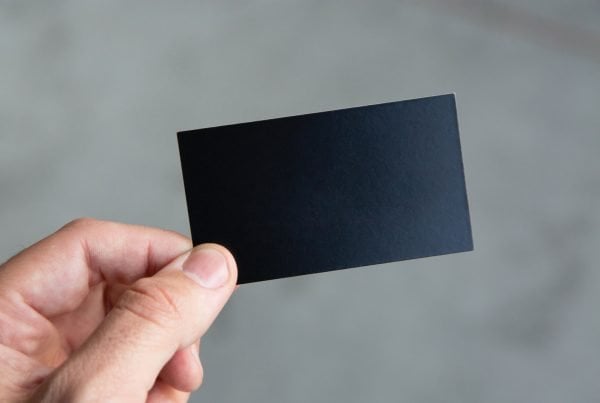Disclosure Sponsored Links: This post contains a paid-for sponsored link, meaning we have received compensation in exchange for including it. Sponsorship does not influence our content, but we believe in transparency regarding paid placements.
In today’s world, where the boundaries between digital and physical blur, the Internet of Things (IoT) stands out as a transformative power shaping multiple industries. We see its impact everywhere, from homes that adapt to our lifestyles to cities buzzing with seamless connectivity.
But it’s not just the transportation or healthcare industries benefiting from this disruption. Art studios are also tapping into the potential of IoT. With the right technology, artists and businesses can now create smarter art studios to supercharge the creative process while staying productive and efficient.
Table of Contents
What is a Smart Art Studio?
A smart art studio integrates advanced technology, such as IoT sensors and connected devices, to enhance an artist’s workspace. These tools enable artists to oversee and adjust aspects like temperature, lighting, and sound, ensuring they have the ideal environment tailored to their preferences. By harnessing this technology, artists can improve their studio’s efficiency and cost-effectiveness.
Key features often found in smart art studios include:
- Automated Climate Control: These studios often feature systems that automatically regulate lighting, temperature, and humidity to match the artist’s specifications.
- Remote Oversight and Adjustments: Thanks to IoT capabilities, artists can keep an eye on their workspace conditions from any location and modify settings as needed. This not only saves time but also ensures the artist always works under the best conditions.
- Equipment Monitoring: Smart studios come with devices that monitor the status and performance of vital equipment, like cameras or printers. This proactive approach helps artists detect potential issues early, ensuring smooth operations in their workspace.
The Importance of Smart Technology in Art Studios
Smart technology is transforming the way artists imagine, collaborate, and display their masterpieces. By bringing innovative tech tools into the artistic domain, the realm of creativity has expanded, shifting the paradigms of the art world.
Here’s why smart tech holds such significance in smart art studios:
Enhancing Creativity and Innovation
With tools ranging from cutting-edge digital platforms to revolutionary 3D printers and AI-driven software, smart technology provides artists with a diverse palette of possibilities. These advancements not only offer endless avenues for expression but also inspire artists to venture beyond conventional methods.
By dabbling in different mediums and techniques, artists can redefine the scope of traditional art. In today’s art scene, smart technology stands out as a catalyst for fresh perspectives and new explorations.
Facilitating Collaboration and Engagement
With the aid of IoT devices and cloud-driven platforms, artists now have the ability to collaborate instantaneously without geographical constraints. This connection creates a community spirit among artists, making the exchange of ideas and expertise more fluid. Additionally, it paves the way for shared learning opportunities, as artists draw inspiration from each other’s unique techniques and approaches.
Furthermore, smart art studios allow artists to engage with their audience innovatively. Virtual exhibitions and interactive art installations provide immersive experiences. This opens up new possibilities for artistic expression and creates unique opportunities for audience interaction and participation.
Streamlining Operations
With its advanced capabilities, smart technology has the potential to revolutionise studio management. By automating lighting, temperature control, inventory management, and security, artists are given more time to fully immerse themselves in their creative process. This liberates artists from needing to do repetitive administrative tasks, allowing them to channel their energy into their artistry and reach new heights of inspiration.
Promoting Sustainability
Numerous art studios are now embracing smart technologies with an emphasis on sustainability and minimising their environmental impact. These include the adoption of energy-saving devices, a shift towards digital art which negates the requirement for physical materials, and the option for artists to work from home, reducing travel-related emissions.
Advancements in Commercial Printing with IoT
The commercial printing sector is experiencing a revolution thanks to IoT. As printers connect to the web and smart devices, businesses are witnessing improved efficiency, cost savings, and heightened quality checks.
Below are some examples of how IoT is setting new standards in the world of commercial printing.
Remote Printing
With smart IoT technology, commercial printers can now print remotely without the need for manual labor. This leads to improved delivery times and lower costs due to reduced travel time. By connecting these devices to a centralised network, businesses are able to track their orders in real-time, giving them greater control over their workflow and production process.
Automated Ink Management
Keeping track of ink levels manually can be time-consuming and inefficient. But with IoT-enabled printers, this process becomes automated. These smart devices can monitor ink levels in real time and even reorder supplies when they’re running low. This automation reduces downtime, ensures consistent print quality, and eliminates the risk of running out of ink during a big job.
Moreover, IoT technology enables predictive maintenance for printers. These devices can anticipate potential issues and schedule maintenance before a problem arises by analyzing usage data. This proactive approach can extend the life of your printer and maintain its optimal performance.
Integrated Workflows
IoT is revolutionizing workflows in the commercial printing industry by linking digital design tools with printers. This integration allows for seamless design and production transition, reducing errors and streamlining operations.
Additionally, IoT facilitates real-time collaboration between artists and printers. Designers can send their work directly to the printer and receive immediate feedback on print quality, color accuracy, and more. This instant communication can speed up the production process and ensure that the final product meets the artist’s vision.
IoT Will Continue to Streamline Creativity
As technology advances, how we create and produce printed materials is becoming faster, more efficient, and easier to manage. IoT is at the core of this transformation, connecting digital designs with physical media and automating key processes throughout production.
Whether artists are creating a poster for an exhibition or commercial printers are filling large orders, IoT technology can make the process smoother and more successful. There is no telling what other possibilities IoT will unlock for creative productions as the years progress.
_
___
Author Bio:
Guido Voigt
Guido Voigt is the Director of Engineering, at Lantronix, a global provider of turnkey solutions and engineering services for the internet of things (IoT). Guido’s and Lantronix’s goal is to enable their customers to provide intelligent, reliable, and secure IoT and OOBM solutions while accelerating time to market.









